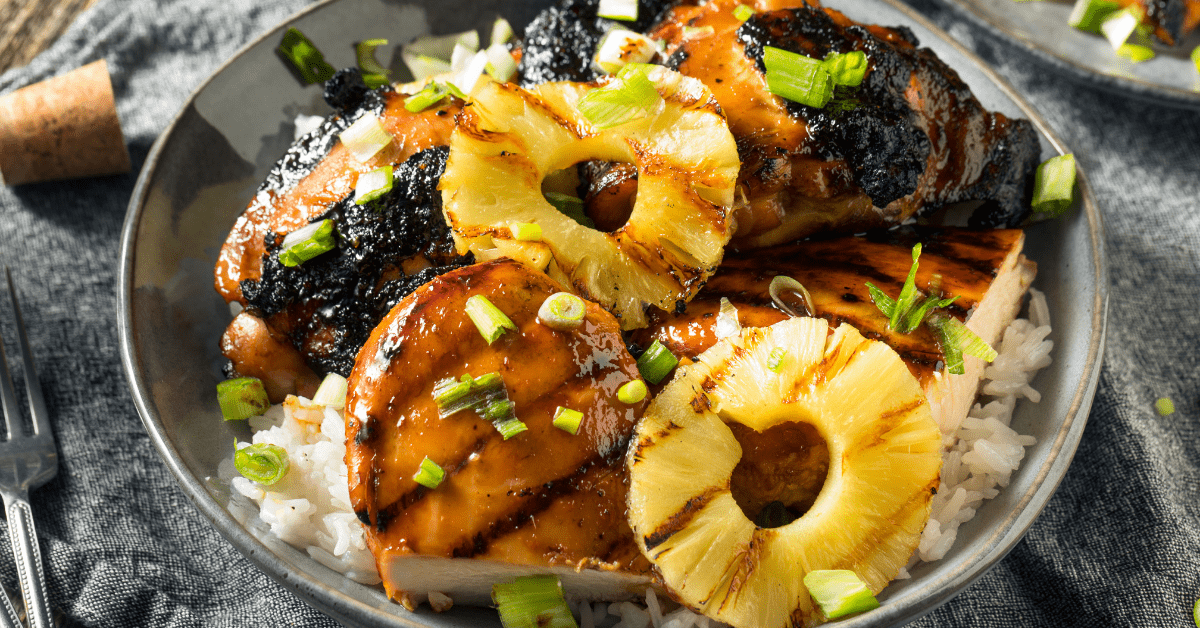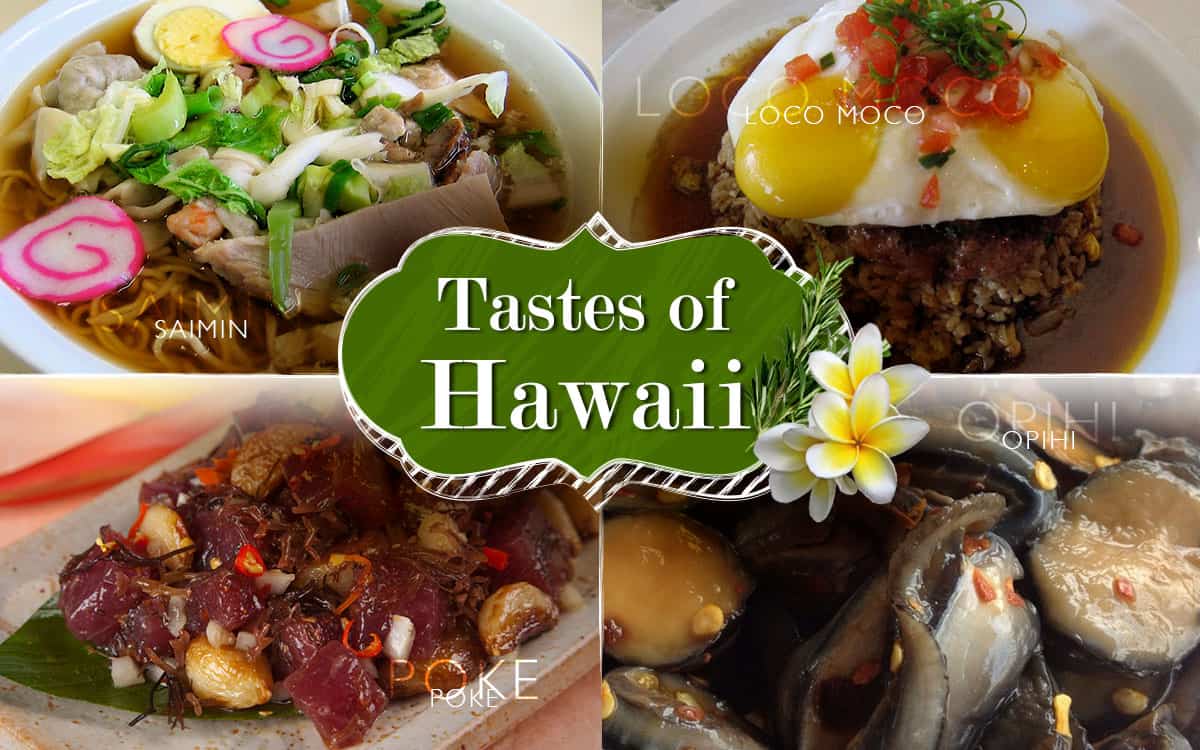Embark on a culinary journey through the vibrant flavors and rich traditions of Hawaii. Traditional Hawaiian recipes, steeped in cultural heritage and culinary artistry, offer a tantalizing glimpse into the heart of this enchanting archipelago. From the lush rainforests to the sparkling shores, the islands’ unique ingredients and time-honored cooking techniques have shaped a cuisine that is both delectable and deeply meaningful.
In this comprehensive guide, we will delve into the essence of Hawaiian cuisine, exploring the essential ingredients, cooking techniques, and beloved dishes that have captivated palates for generations. We will also uncover the cultural significance of these recipes, showcasing how they are intertwined with Hawaiian traditions and celebrations.
Introduction
Traditional Hawaiian recipes hold a profound cultural significance, embodying the rich culinary heritage of the Hawaiian people. These recipes, passed down through generations, are deeply intertwined with the islands’ unique history, geography, and cultural practices.
The origins of Hawaiian cuisine can be traced back to the arrival of the first Polynesian settlers in the islands around 400 CE. These early settlers brought with them a wealth of culinary knowledge and techniques, which they adapted to the abundant natural resources available in their new environment.
Influences on Hawaiian Cuisine
Over the centuries, Hawaiian cuisine has been influenced by a variety of cultures, including Chinese, Japanese, Portuguese, and American. These influences have resulted in a unique blend of flavors and techniques that characterize Hawaiian cooking today.
- Chinese immigrants introduced soy sauce, ginger, and other Asian ingredients to Hawaii.
- Japanese immigrants brought their love of sushi, sashimi, and tempura.
- Portuguese immigrants introduced the use of pork and beef in Hawaiian cuisine.
- American settlers brought their own culinary traditions, such as the use of dairy products and baked goods.
Key Ingredients
Traditional Hawaiian recipes rely on a unique blend of ingredients that contribute to their distinctive flavors and textures. These ingredients are often sourced locally and have been used for generations.
Essential Ingredients
- Taro: A root vegetable with a starchy, slightly sweet flavor. It is a staple ingredient in Hawaiian cuisine, used in dishes such as poi and taro chips.
- Sweet Potato: A sweet and earthy root vegetable that is often roasted or baked. It is a popular side dish and is also used in desserts.
- Pineapple: A juicy and tangy fruit that is used in both sweet and savory dishes. It is a symbol of Hawaii and is often used in desserts, salads, and main courses.
- Coconut: A versatile ingredient that is used in both sweet and savory dishes. The coconut meat is used in desserts, while the coconut milk is used in soups, stews, and curries.
Nutritional Value
The key ingredients in traditional Hawaiian recipes are not only delicious but also nutritious. Taro is a good source of fiber and potassium, while sweet potatoes are a good source of vitamin A and vitamin C. Pineapple is a good source of vitamin C and manganese, while coconut is a good source of healthy fats and fiber.
Examples of Use
These key ingredients are used in a variety of traditional Hawaiian dishes, including:
- Poi: A mashed taro dish that is a staple food in Hawaii.
- Kalua Pig: A slow-roasted pork dish that is often served with poi.
- Huli Huli Chicken: A grilled chicken dish that is marinated in a sweet and savory sauce.
- Loco Moco: A dish that consists of rice, hamburger patties, and gravy, often topped with a fried egg.
Cooking Techniques
Traditional Hawaiian cuisine employs unique cooking techniques that have been passed down through generations. These methods not only enhance the flavor of dishes but also preserve their nutritional value.
One of the most iconic techniques is imu cooking, which involves wrapping food in ti leaves and cooking it in an underground oven. This method imparts a smoky and earthy flavor to dishes and retains moisture, resulting in tender and juicy meats and vegetables.
Cooking Methods
- Imu: Underground oven cooking wrapped in ti leaves
- Kalua: Slow-cooking in an underground oven, typically used for pork
- Poi: Pounding cooked taro root into a smooth paste
- Poke: Marinating raw fish in a sauce, usually made with soy sauce, sesame oil, and green onions
- Lomi Lomi: Salting and massaging raw fish to tenderize it
- Huli Huli: Grilling meat or chicken over an open flame, frequently turning it to ensure even cooking
- Lau Lau: Steaming meat and vegetables wrapped in ti leaves
Popular Dishes
Traditional Hawaiian cuisine offers a diverse range of delectable dishes that reflect the islands’ unique culinary heritage. From hearty appetizers to flavorful main courses and sweet desserts, Hawaiian dishes showcase the abundance of fresh ingredients and distinctive flavors found in the region.
The popularity of these dishes has extended beyond Hawaii, captivating palates worldwide. Let’s explore some of the most beloved traditional Hawaiian dishes and their enchanting characteristics:
Appetizers
Hawaiian appetizers are designed to tantalize taste buds and whet the appetite for the main course. They often feature fresh seafood, tropical fruits, and savory sauces.
- Poke: A refreshing appetizer made with raw fish marinated in soy sauce, sesame oil, and various seasonings.
- Poi: A traditional Hawaiian staple made from mashed taro root, served as a dip or side dish.
- Kalua Pig Spring Rolls: Crispy spring rolls filled with tender kalua pig, a savory Hawaiian dish made from slow-roasted pork.
Main Courses
Hawaiian main courses are hearty and flavorful, often featuring succulent meats, fresh seafood, and tropical produce.
- Kalua Pig: A traditional Hawaiian dish where a whole pig is cooked in an underground oven called an imu.
- Loco Moco: A comforting dish consisting of rice topped with a hamburger patty, fried egg, and brown gravy.
- Laulau: A flavorful dish made with pork, fish, or chicken wrapped in taro leaves and steamed.
- Huli Huli Chicken: Grilled chicken basted in a sweet and savory sauce made with pineapple juice, soy sauce, and brown sugar.
Desserts
Hawaiian desserts are a sweet and tropical indulgence, often incorporating fresh fruits, coconut, and creamy textures.
- Haupia: A coconut-based dessert with a smooth and creamy texture, similar to panna cotta.
- Poi Mochi: Mochi balls made with mashed taro root, giving them a chewy and earthy flavor.
- Shave Ice: A refreshing dessert made with shaved ice topped with tropical fruit syrups and condensed milk.
Regional Variations

Traditional Hawaiian recipes exhibit regional variations due to the archipelago’s diverse geography and cultural influences. The islands of Hawaii, Maui, Oahu, Kauai, and Molokai each possess unique culinary traditions that reflect their distinct ecosystems, historical events, and cultural practices.
These variations are evident in the ingredients used, cooking techniques employed, and the flavors that define each region’s cuisine.
Hawaii Island
The Big Island of Hawaii is known for its volcanic landscapes and lush forests, which provide an abundance of indigenous ingredients. Dishes from this region often incorporate fresh seafood, wild game, and tropical fruits. The use of volcanic rocks for grilling and cooking imparts a unique smoky flavor to local delicacies.
Maui
Maui’s fertile valleys and coastal areas provide a diverse range of agricultural products. The island’s cuisine is renowned for its sweet and savory dishes, such as Maui onions, fresh produce, and seafood. Maui’s unique climate also influences the cultivation of sugarcane, which is used in the production of locally produced sugar and rum.
Oahu
Oahu is the most populated island in Hawaii and has a cosmopolitan culinary scene. The island’s urban centers offer a wide variety of dining options, from traditional Hawaiian dishes to international cuisine. Oahu’s cuisine reflects the melting pot of cultures that call the island home, with influences from Asia, the Pacific, and the Americas.
Kauai
Kauai, known as the “Garden Isle,” is renowned for its lush rainforests and agricultural abundance. The island’s cuisine emphasizes fresh, locally sourced ingredients, including taro, sweet potatoes, and tropical fruits. Kauai’s culinary traditions have been influenced by Portuguese and Filipino immigrants, who have introduced their own unique flavors and cooking techniques.
Molokai
Molokai is the least populated island in Hawaii and has a strong cultural identity. The island’s cuisine reflects its rural lifestyle and reliance on subsistence farming and fishing. Molokai’s dishes often feature traditional ingredients, such as poi, lau lau, and kalua pig, and are prepared using time-honored techniques passed down through generations.
Health Benefits
Traditional Hawaiian recipes are not only delicious but also packed with nutritional benefits. The use of fresh, locally sourced ingredients ensures that the dishes are rich in vitamins, minerals, and antioxidants.
Key ingredients like poi, fish, and sweet potatoes provide essential nutrients like fiber, protein, and vitamin C. Traditional cooking techniques, such as steaming and roasting, preserve these nutrients and enhance their bioavailability.
Nutritional Value of Key Ingredients
- Poi: Rich in fiber, potassium, and vitamin C
- Fish: Excellent source of protein, omega-3 fatty acids, and vitamin D
- Sweet potatoes: High in fiber, vitamin A, and potassium
- Leafy greens: Abundant in vitamins A, C, and K, as well as minerals like calcium and iron
Preserving Nutrients through Cooking Techniques
- Steaming: Retains water-soluble nutrients like vitamin C and minerals
- Roasting: Caramelizes natural sugars, enhancing flavor and nutrient absorption
- Grilling: Seals in juices, preserving nutrients while adding a smoky flavor
Cultural Impact
Beyond nourishment, traditional Hawaiian recipes hold immense cultural significance, deeply intertwined with the fabric of Hawaiian traditions, festivals, and celebrations. They serve as a testament to the rich heritage of the islands and play a pivotal role in preserving cultural identity.
These recipes are not merely culinary creations but embody the wisdom and knowledge of generations past. They reflect the close connection between the Hawaiian people and their environment, utilizing indigenous ingredients and traditional cooking techniques passed down through oral tradition.
Recipes in Festivals and Celebrations
Traditional Hawaiian recipes take center stage during numerous festivals and celebrations throughout the year. The annual Merrie Monarch Festival, for instance, showcases the art of hula and features a culinary component where participants compete in preparing authentic Hawaiian dishes.
During the Makahiki season, a traditional period of feasting and celebration, families and communities gather to share meals centered around traditional Hawaiian recipes, such as kalua pig and poi. These gatherings foster a sense of unity and connection to the past.
Outcome Summary

Traditional Hawaiian recipes are a testament to the rich cultural heritage and culinary artistry of the islands. By embracing these culinary treasures, we not only savor their delectable flavors but also connect with the vibrant spirit of Hawaii. As we continue to explore and appreciate these time-honored traditions, we preserve a legacy that will continue to tantalize taste buds and enrich our understanding of this captivating culture for generations to come.
FAQ Section
What are the key ingredients used in traditional Hawaiian recipes?
Traditional Hawaiian recipes often feature ingredients such as taro, poi, sweet potato, breadfruit, coconut, fish, and seaweed, each contributing unique flavors and textures to the dishes.
How do traditional cooking techniques enhance the flavor of Hawaiian dishes?
Techniques like imu cooking (underground oven) and poi pounding impart distinct flavors and textures to Hawaiian dishes, enhancing their umami and depth of taste.
What are some popular traditional Hawaiian dishes?
Popular dishes include poi, kalua pig, loco moco, and haupia, each showcasing the unique flavors and culinary traditions of the islands.
